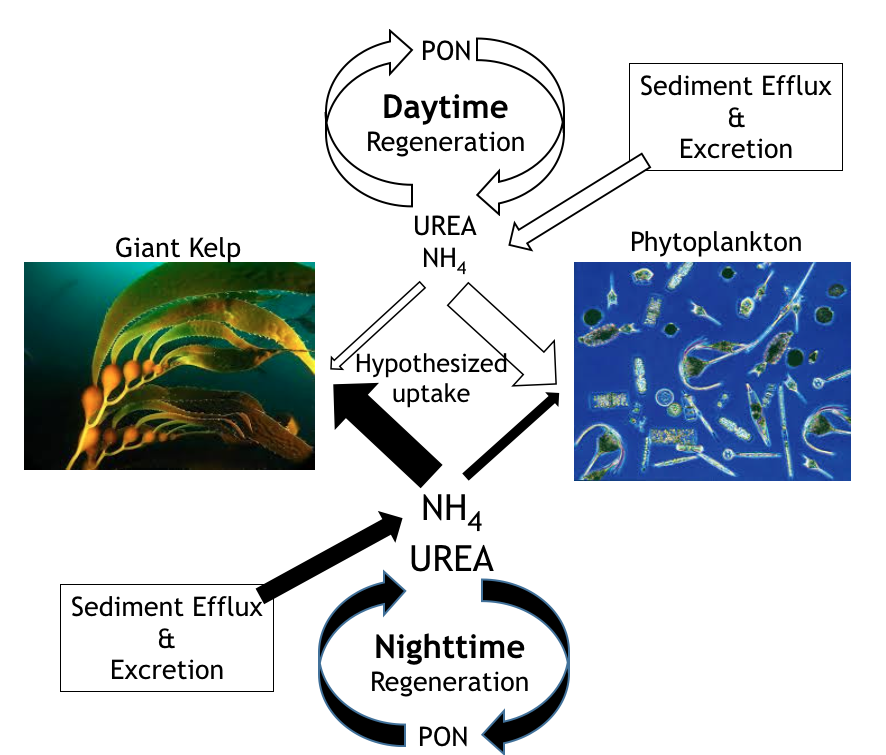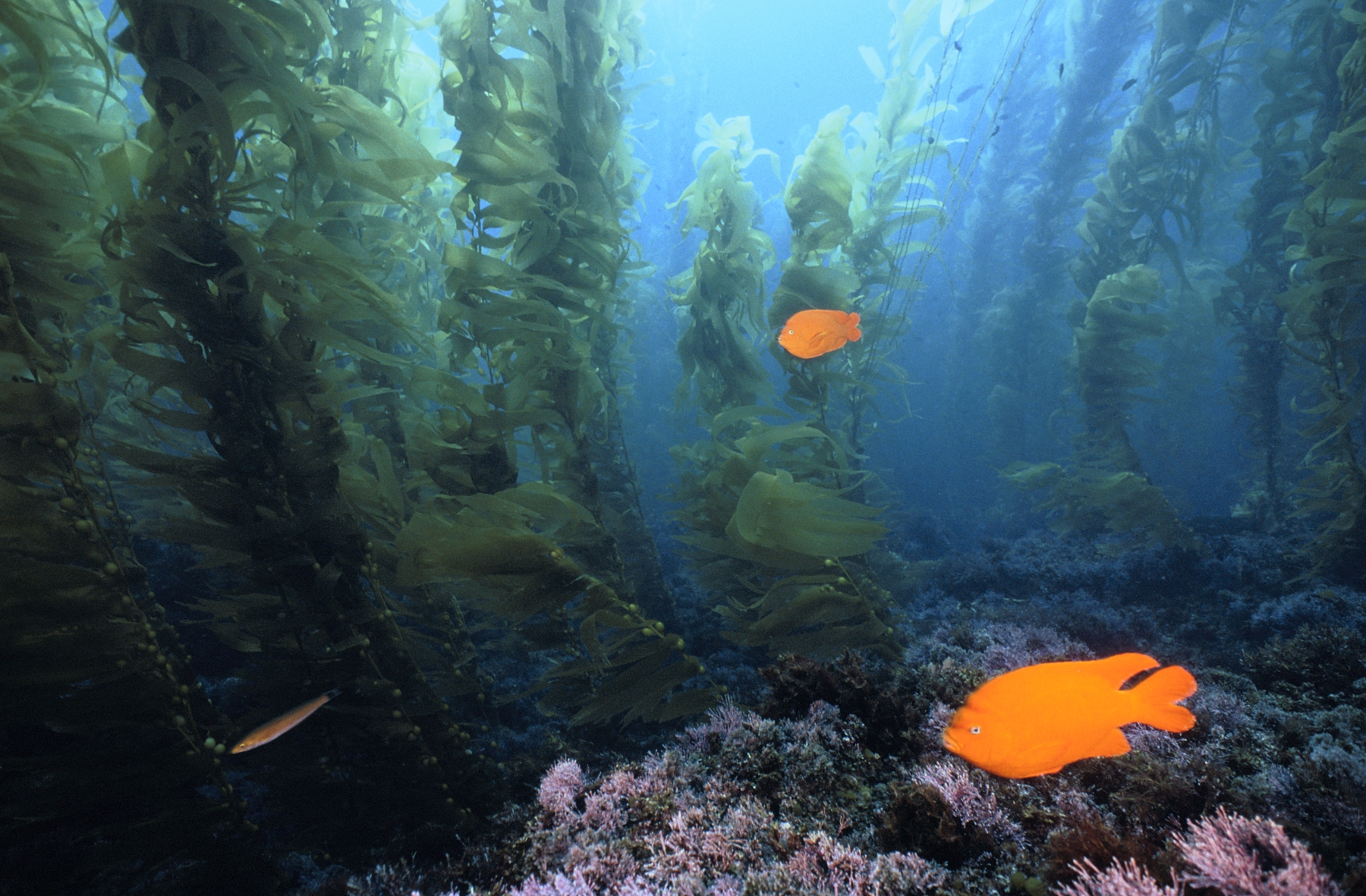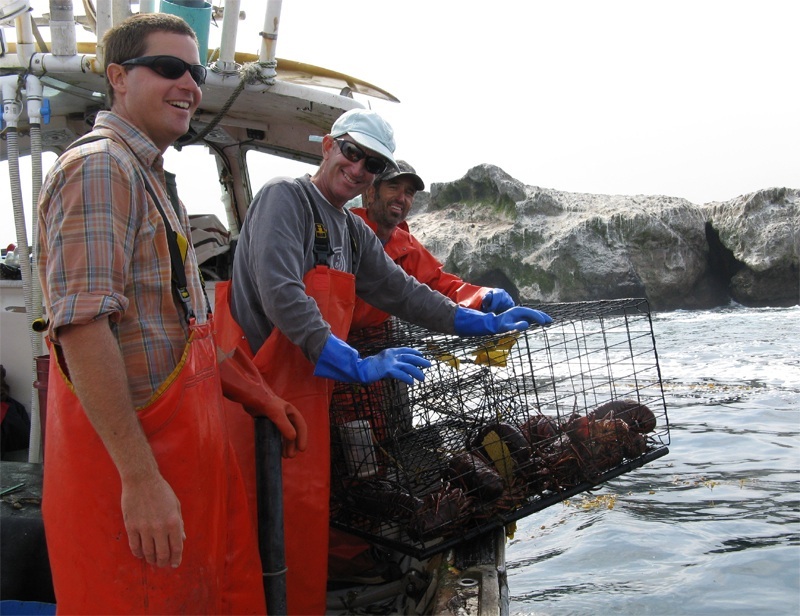SBC LTER Research
Theme 1: Environmental drivers of kelp persistence and community structure
Our previous findings highlight the capacity of giant kelp to persist in the face of severe nutrient and thermal stress associated with increased environmental variability. Yet, giant kelp forests do not persist indefinitely and are regularly disturbed by large waves that disproportionately remove kelp, and fishing which targets higher trophic levels. Ongoing environmental changes are expected to alter the frequency and severity of wave disturbance and fishing effort, which should influence kelp persistence and kelp forest community structure.
Theme 1 research examines:
- the consequences of changes in kelp persistence on the structure and function of the kelp forest community,
- drivers of kelp forest recovery following disturbance,
- ecological consequences of fishing,
- sources and utilization of different forms of nitrogen that enable kelp to persist during conditions of low nitrate availability.
SBC researchers are investigating the importance ammonium and urea in fueling giant kelp growth and the sources and mechanisms that influence the supply of these recycled forms of nitrogen, including competition with phytoplankton


The giant kelp Macrocystis pyrifera is a highly productive and dynamic foundation species that influences the abundance and dynamics of a diverse array of reef plants and animals
Experiments and co-sampling with fisherman performed inside and outside of marine protected areas are being used to investigate the ecosystem consequences of fishing
